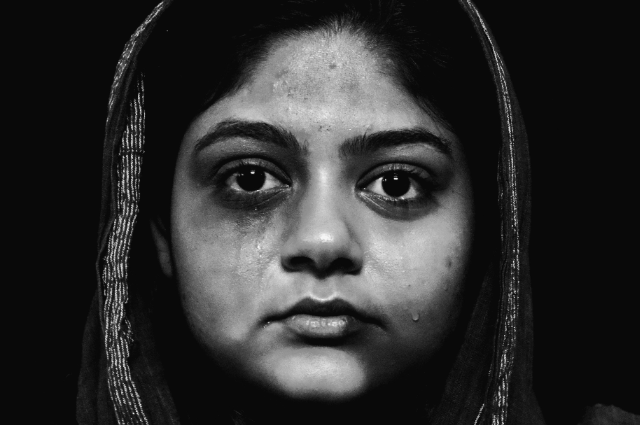
Photo by Sneha Sivarajan on Unsplash
INTRODUCTION
Sexual assault is a pervasive issue affecting individuals of all genders, ages and backgrounds even Rape culture in India has become rampant in the past decade. Even though the crimes have been on the rise the changes required to protect women have been none. It encourages a range of non-consensual sexual acts from unwanted touching to rape. Sexual assault takes many forms including attacks such as rape or attempted rape, as well as any unwanted sexual contact, fondling, sexual coercion, drug-facilitated assaults or threats. Usually, a sexual assault occurs when someone touches any part of another person's body in a sexual way, even through clothes, without that person's consent.
NOTABLE CASES IN INDIA
Several high-profile cases have brought the issue of sexual assault to the forefront in India.
1. Nirbhaya Case (2012):
The gang rape and murder of a young woman in Delhi sparked nationwide protests and led to significant changes in laws regarding sexual violence. The case highlighted the need for better safety measures and justice for survivors.
2. Unnao Rape Case (2017):
Involving a young woman who was allegedly raped by a politician, this case revealed systemic issues within law enforcement and the judiciary, leading to public outrage and demands for accountability.
3. Hyderabad Vet Case (2019):
The brutal rape and murder of a veterinary doctor led to widespread protests and calls for stricter laws and enforcement. The incident reignited debates on women's safety in urban areas.
4. Kolkata Rape-Murder Case (2024):
On 9 August 2024, a 31-year-old female postgraduate trainee doctor at R. G. Kar Medical College and Hospital in Kolkata, West Bengal, India, was raped and murdered in a college building. Her body was found in a seminar room on campus.
SOCIETAL ATTITUDES AND CHALLENGES
Why is rape pervasive in India: Several factors contribute to the prevalence of sexual assault in India.
- Patriarchal Norms: Traditional gender roles often devalue women's autonomy, leading to environments where sexual violence is normalized.
- Victim Blaming: Survivors frequently face stigma and scrutiny, discouraging them from reporting assaults.
- Underreporting: Many cases go unreported due to fear of retribution, shame, or lack of faith in the legal system.
- Lack of Education on Consent: There is insufficient education about consent, healthy relationships, and gender equality. Many individuals grow up without a clear understanding of boundaries, leading to misconceptions about acceptable behavior.
- Inadequate Law Enforcement: The legal system often fails to protect victims. Cases of sexual violence are frequently met with indifference or bias from law enforcement, discouraging survivors from coming forward.
- Underreporting and Stigma: Cultural stigma associated with sexual assault leads to significant underreporting. Many survivors fear social ostracism or retaliation, which keeps the issue hidden and unaddressed.
- Influence of Media and Popular Culture: Media portrayals of women and sexual relationships can perpetuate harmful stereotypes. Sensationalized coverage of sexual violence can desensitize the public and diminish the seriousness of the issue.
- Economic Disparities: Poverty and lack of education can contribute to vulnerability, especially for women in rural areas. Economic dependence may limit their ability to escape abusive situations or seek justice.
- Lack of Support Systems: Limited access to psychological support, legal aid, and medical resources for survivors makes it challenging for victims to seek help and navigate the aftermath of assault
LEGAL FRAMEWORK
India has enacted several laws to combat sexual violence, including:
The Criminal Law (Amendment) Act, 2013: This law was introduced in response to the Nirbhaya case, enhancing punishments for sexual offenses and expanding the definition of rape.
The Protection of Women from Domestic Violence Act, 2005: This act aims to protect women from domestic abuse, which often includes sexual violence.
SUPPORT FOR SURVIVORS
Supporting survivors of rape is critical for their healing:
- Listening and Believing: It is essential to validate their experiences and emotions.
- Providing Resources: Survivors should have access to medical care, counselling, and legal assistance.
- Encouraging Reporting: While reporting is a personal choice, it can help in seeking justice and preventing further assaults.
PREVENTING STRATEGIES
- Education: Comprehensive sex education programs that focus on consent, boundaries, and respect are vital for fostering healthier relationships.
- Community Awareness: Public campaigns can raise awareness about the prevalence of rape and challenge harmful stereotypes.
- Bystander Intervention: Training individuals to intervene in potentially dangerous situations can help prevent assaults.
- Policy Advocacy: Advocating for stronger laws and support systems for survivors can lead to meaningful change.
CONCLUSION ON SEXUAL ASSAULT:
Sexual assault is a profound violation of human rights that impacts individuals, families, and communities across the globe. Addressing this issue requires a collective commitment to change societal attitudes, promote education on consent, and create robust support systems for survivors. By fostering open dialogue, challenging harmful norms, and advocating for effective legal frameworks, we can work toward a future where all individuals feel safe and respected. It is crucial to support survivors and hold perpetrators accountable, ultimately striving to eliminate sexual violence and create a culture of respect and dignity for all.
